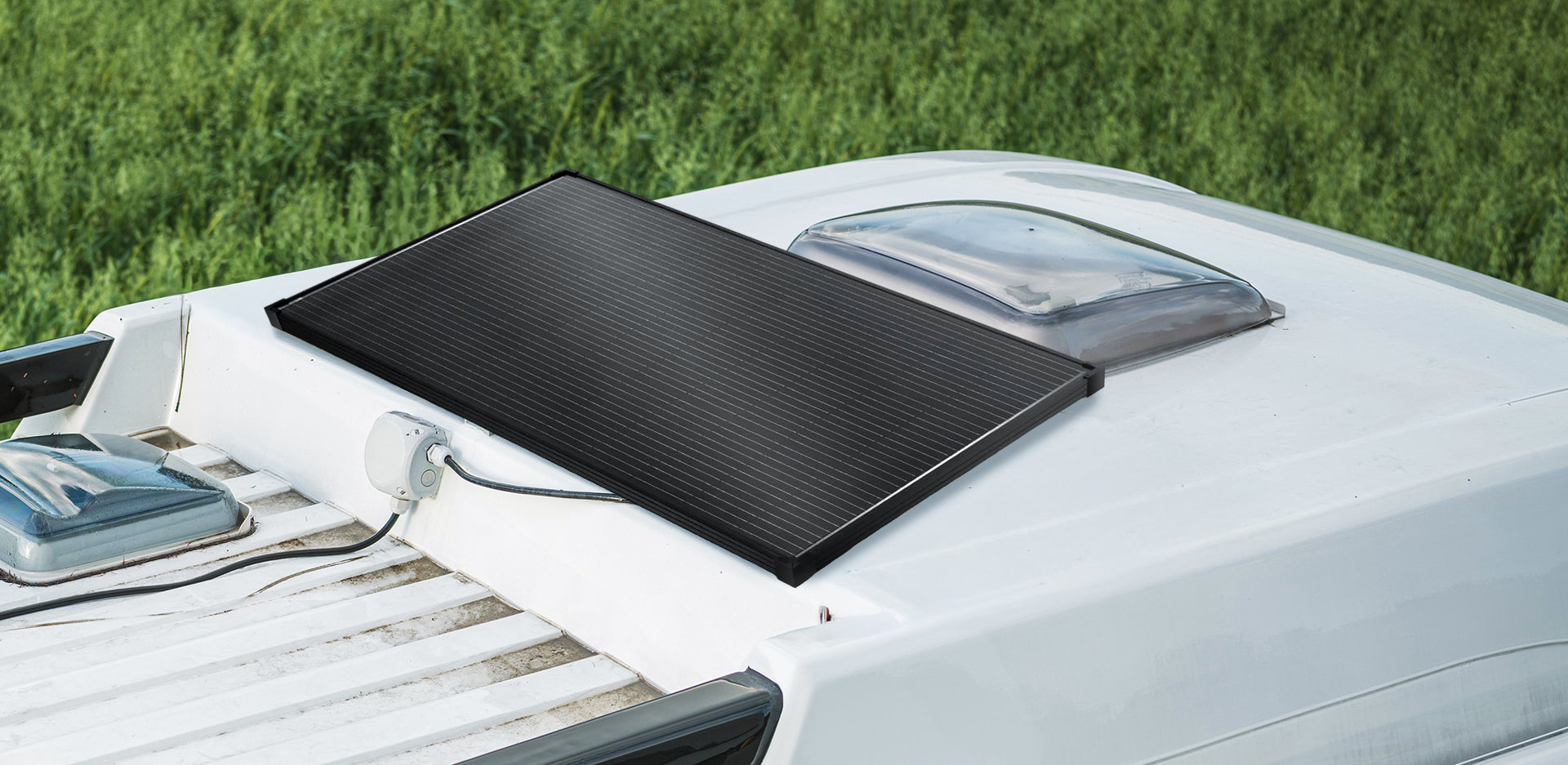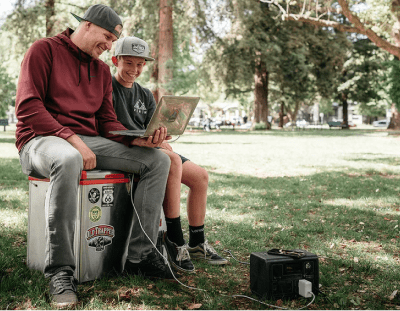With over 14 million Aussies going camping each year, the desire for a comfortable, connected, and sustainable trip has never been greater. Efficient solar panel kits for camping trips have emerged as the modern solution to age-old camping challenges, replacing the roar of petrol generators with silent, sustainable power that keeps your devices charged and your campsite peaceful. Whether you're a weekend warrior escaping to the bush or a seasoned caravanner exploring Australia's remote corners, portable solar panels offer the freedom to venture beyond powered campsites while maintaining the creature comforts that enhance your outdoor experience. The growing accessibility of off-grid solar systems means that sustainable, reliable power is no longer a luxury but an essential piece of camping equipment that transforms how we experience the great outdoors.
Why Choose a Solar Panel Kit for Your Next Trip
The appeal of solar power extends far beyond simple convenience, offering campers true off-grid freedom that fundamentally changes where and how they can explore. Unlike traditional power sources that tether you to designated camping spots or require constant fuel replenishment, solar panels provide silent, eco-friendly power that allows you to wake up to birdsong rather than generator noise while reducing your environmental footprint. Modern solar kits demonstrate remarkable versatility, capable of powering everything from essential devices like phones and GPS units to comfort items such as portable fridges, LED camp lights, and cooling fans, ensuring you stay connected and comfortable regardless of your location. When considering the elimination of ongoing fuel costs and powered campsite fees, investing in quality solar equipment becomes a smart long-term decision that pays dividends with every adventure, making sustainable off-grid living more accessible than ever before.
Understanding the Different Types of Portable Solar Panels
Choosing the right portable solar panels requires understanding the distinct advantages of each design type, as the market offers solutions tailored to different camping styles and power requirements. Folding solar panel kits, often called suitcase-style panels, feature rigid construction with built-in legs and integrated charge controllers, providing an all-in-one solution that's ideal for caravanners and car campers who value durability and convenience despite the additional weight and bulk. Solar blankets and mats represent the lightweight alternative, offering exceptional portability with flexible designs that can be draped over windscreens or tent surfaces.
These make them perfect for 4WD enthusiasts and hikers who prioritise minimal pack-down size—products like the VoltX 12V 200W Folding Solar Mat exemplify this category's balance of power and portability. Flexible solar panels and semi-flexible variants offer a third option, featuring thin profiles suitable for semi-permanent mounting on van roofs or caravan surfaces, providing consistent power generation for dedicated touring vehicles and van life enthusiasts who need integrated mobile solar panels that don't compromise vehicle aerodynamics or require constant setup and pack-down.
Here’s what one of our customers said:
“I've been using the VoltX 160W solar blanket for four months and very happy with it. There are some terrible solar blankets on the market that fail quickly due to poor construction and cheap cells. This one seems well made and durable (for example the panels are stiff enough so they don't bend, and the surface doesn't mark or peel) so I expect it to last a few years. I get about 10 amps (130W) which is pretty good for a nominal 160W product. It is also quite tolerant to angle to the sun - even if not perpendicular to the sun it still captures a decent amount of power. Overall, very happy.”
A Simple Guide to Choosing the Best Camping Solar Kit
Selecting the ideal solar panel system begins with performing a realistic power audit of your camping needs, listing all devices you intend to run and their power consumption to determine whether a 120W-160W kit for weekend device charging or a more robust 200W-300W setup for extended trips with fridges better suits your requirements. Quality kits from Outbax include essential components such as MPPT charge controllers that efficiently regulate power flow to protect your battery investment, while pairing panels with appropriate deep-cycle batteries—particularly lightweight, long-lasting LiFePO4 options like the VoltX 12V 100Ah LiFePO4 Battery—ensures reliable energy storage throughout your journey.
Understanding the relationship between portability and power output helps match your chosen system to your camping style. On average, solar panel cost typically ranges from $300-$500 for entry-level kits to $800-$1500 for comprehensive systems capable of running heavy appliances. When you're ready to purchase solar panels, comparing these factors ensures you invest in a solution that delivers both immediate satisfaction and long-term value for your outdoor adventures.
Essential Tips for Setting Up and Using Your Solar Kit
Maximising your solar panel installation efficiency requires strategic positioning and proper maintenance practices that ensure consistent power generation throughout your trip. Begin by selecting a sun-drenched location free from shadows cast by trees, vehicles, or structures, then angle your panels directly towards the sun, adjusting their position throughout the day to capture maximum solar energy—even small adjustments can significantly improve charging rates.
Follow a systematic connection sequence for safety. First, connect your charge controller to the battery, then attach solar panels to the controller, and finally connect appliances to your battery or inverter, always double-checking connections before each use. Regular maintenance, including keeping panel surfaces clean of dust and debris while inspecting cables and connections for wear, extends equipment lifespan and maintains peak performance, ensuring your solar setup delivers reliable power trip after trip.
Powering More Than Just Your Tent: Popular Uses
The versatility of modern off-grid solar systems extends well beyond traditional camping applications, opening possibilities for diverse outdoor lifestyles and emergency preparedness. Van life enthusiasts have embraced van solar panels as essential infrastructure, using flexible or folding units to power complete mobile offices including laptops, water pumps, ventilation systems, and kitchen appliances, creating self-sufficient homes on wheels that support extended travel without shore power connections.
Marine applications demonstrate equal promise, with boat solar panels maintaining battery banks, running navigation equipment, fish finders, and bilge pumps, proving particularly valuable for extended coastal camping or fishing expeditions where traditional charging options remain limited. Beyond recreational use, portable solar kits serve as reliable emergency backup power solutions, ensuring households maintain essential communications and lighting during blackouts, positioning these versatile systems as valuable investments that transcend camping to become integral components of comprehensive preparedness strategies.
Final Thoughts on Powering Your Adventures
Embracing solar technology transforms camping from a departure from modern conveniences into an opportunity to enjoy sustainable comfort while exploring Australia's most remote and beautiful locations. The freedom to camp anywhere without sacrificing power for essential devices, combined with the satisfaction of using clean, renewable energy, makes solar panel kits an investment in both adventure quality and environmental responsibility.
Whether you're drawn to the silence of solar-powered camping, the independence from powered sites, or simply the long-term cost savings, choosing the right system from Outbax's range ensures your specific power needs and camping style are perfectly matched. As more Australians discover the benefits of off-grid solar systems, the technology continues advancing, making sustainable outdoor adventures more accessible and enjoyable for everyone ready to explore beyond the boundaries of traditional camping.


